November is not known for the abundance of flowers in the garden. The autumn temperatures and weather conditions put most of the trees and shrubs to the test, so that they say goodbye to the winter dormancy. Nevertheless, you don't have to do without flowers in the garden in November either. Ideally, we experience a golden autumn, which is also accompanied by mild temperatures. Then many potted plants can still bloom.
Here you will find a selection of blooming autumn flowers for indoors and outdoors-

Heart leaf flower, Anthurium clarinervium: Care A-Z
With its heart-shaped, whitish-green veined leaves and slightly wavy at the edges, the heart leaf flower immediately catches the eye. They are the greatest ornament of this attractive ornamental foliage plant.

Indoor begonias, Begonia elatior hybrids: care
The indoor begonia can be a wonderful addition to the interior, but it also has some maintenance requirements. You can find out what to look out for here.
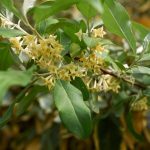
Wintergreen olive willow, Elaeagnus ebbingei: care from A-Z
Wintergreen olive willows are not only pretty ornamental plants, but also easy to care for. They can be planted out or kept in pots. Their use as hedge plants is still relatively rare in this country. The sweet scent of their flowers, which appear in autumn, are a welcome source of food for insects. But birds also like the shrub because it offers them protection and ideal breeding grounds.

Saffron crocus, Crocus sativus: care from A-Z
The saffron crocus is not only rich in color and nectar, but can also make its owner rich in a certain sense. The purple blooming plant provides the precious threads of the most expensive spice in the world. But it is well known that money does not grow on trees, or in this case on the lawn. A little maintenance is required before the gardener can harvest the aromatic dye. These care instructions are the key to success.
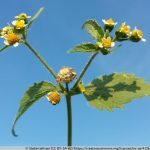
French cabbage, button cabbage, galinsoga: care from A-Z
The French herb also bears the nickname "garden plague", but wrongly if the care of the tasty and healthy herb is right. Since the button herb feels at home almost everywhere, it is also very easy to care for. Because it also grows preferentially at the edges of fields and roads in fields and in many gardens. Farmers are not thrilled when the cabbage appears between their potatoes and beets, but cooks increasingly prefer Galinsoga in the kitchen, as it is very suitable for salads.

African violets, Saintpaulia ionantha: care and location
African violets have been popular houseplants for decades as they bloom abundantly. The classic flower colors of the plants are dark purple, white and pink. Today there are around 2,000 hybrid varieties, so that no wish remains unfulfilled when it comes to choosing. The flower color today ranges from white to dark purple, with a wide variety of shades being offered. You can also choose between single and double flowers. The height of the plants including the flower is 10 to 40 centimeters.

Bat flower | Care of the Tacca chantrieri from A - Z
The bat flower is an exotic beauty from tropical climes that originally comes from the southeastern part of Asia. The plant grows in the herbaceous undergrowth and prefers warm, humid weather. If you want to cultivate the plant, you need a little tact, because the care of Tacca chantrieri requires a lot of attention. The requirements for temperature, water and light are very specific. However, some devices increase the success of cultivation. If you manage to create a perfect environment, you will be rewarded with beautiful flowers - which give the plant its name.
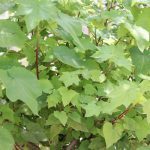
Linden tree, Sparmannia africana: care from A-Z | Is it poisonous?
The name Zimmerlinde is deceptive. What reminds us of a local linden tree with its light green, heart-shaped, hairy and almost translucent leaves is actually an African tree. Indoors, its growth remains modest, but can still reach the ceiling. This linden tree improves the room climate and, according to Far Eastern Feng Shui, also the flow of energy. If it is well cared for in this country, this immigrant sapling even contributes a few enchanting flowers.

Standard rose care from A-Z | Cutting rose stems
The care of standard roses is the supreme discipline for hobby gardeners. An optimal location alone is not enough to showcase the queen of flowers as a picturesque rose stem. Proper planting, fertilizing, watering and cutting round off successful cultivation perfectly. It is important to note important differences in comparison with classic bed and shrub roses. This green guide will familiarize you with the flawless process of caring for high-stem roses from A-Z. A beginner's guide explains when and how to cut rose stems in an exemplary manner.
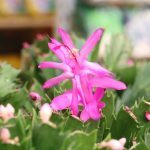
Christmas cactus: care from A-Z | Schlumbergera hybrids
The Christmas cactus comes from the rainforest and has its extraordinary name (Schlumbergera) from its inventor Frédéric Schlumberger. The large flowers that are present at Christmas time stand out. The robust cactus species needs little care, but a few conditions must still be met in the local area. A little horticultural skill is required, especially when overwintering and propagating, but the cactus species is also suitable for beginners.

Snow banana, Ensete glaucum - care from A-Z
The snow banana is a robust banana tree from the Ensete genus, which impresses with its rapid growth and imposing stature. It not only grows up to five meters high, but also forms leaves that can reach a length of two meters. Only with a lot of luck does it develop fruits that are inedible for humans but contain seeds. These are used for the propagation of the Ensete glaucum, as other methods do not work.

Spit palm, Euphorbia leuconeura: care from A-Z | Is it poisonous?
The spit palm, also known as spring palm or simply spit plant, is a milkweed plant that distributes seeds via a special type of seed. The plant opens the capsule fruits and shoots the seeds over a range of several meters, which has earned it the name spit palm. In addition, the palm is popular with many gardeners, because its tropical character allows it to blend in nicely with the ambience. You just have to be careful about their toxicity when keeping them.
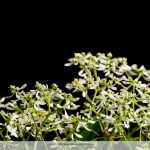
Magic snow, Euphorbia graminea - cultivation, care and overwintering
With fragrant, white veils of flowers, magic snow is there wherever a magnificent gap filler is desired. The graceful gypsophila also lives up to its name as an opulent summer bloomer in the bed and on the balcony. This guide will introduce you to professional cultivation and guide you step by step through uncomplicated care. How you successfully overwinter Euphorbia graminea is no longer hidden from you.

Poinsettia: care and pruning of the winter plant from A-Z
Every year it appears in numerous specialty shops and even supermarkets. We are talking about the poinsettia, botanically also called Euphorbia pulcherrima, which enjoys great popularity year after year during the Christmas season. But what kind of care does the milkweed plant actually need? Poinsettias are perennial plants native to South America. The bush-like growth of a height of up to six meters in the home is rarely found here, as we cultivate the poinsettia as a container plant. In many cases, the poinsettia in this country only lasts one Advent season. This is a shame, because with the right care, the graceful plant can easily last for a few years.

Lucky bamboo: care from A-Z | Information about watering, multiplying & Co.
The lucky bamboo is one of the plants that are often assigned to the wrong plant family due to their name. However, the asparagus plant, which is known under the English name Lucky Bamboo, is a dragon tree and not a bamboo, let alone a yucca palm. The confusion arises because of the long stems, which remind many people of bamboo, which in the end leads to numerous care errors and leads to the death of the snake lily.

Room cyclamen, Cyclamen persicum - care from A-Z
The indoor cyclamen is one of the most popular and most widespread potted flowers in Germany. When nature loses its color in autumn, it ensures a good mood during the gray season with brightly shining flowers until spring. However, when it comes to care, the Cyclamen persicum is a plant in which a few details should be observed. With the help of professional care instructions, plant lovers of indoor cyclamen will be rewarded with abundant flowers and a long, healthy life.
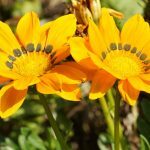
Gazanie, Gazania - sowing, care and wintering of midday gold
The gazanie, also known as midday gold, closes its flowers in cloudy weather. The graceful plant belongs to the daisy family and is native to East and South Africa. The sixteen species known worldwide bloom in various colors. In the local latitudes they are known as annual plants, but they can be one brought little skill and knowledge even over the cold winters and thus cultivated for several years will.
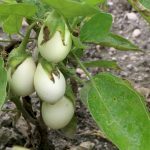
Eierbaum, Solanum melongena - care and wintering
The egg tree Solanum melongena, which comes from South America, is a wild species of eggplant. In this country it is usually grown as an annual. The most striking thing about this quirky plant is undoubtedly its fruits. They develop from the purple-blue flowers that form continuously. First of all, they are small white balls that take on the shape of a chicken egg. The white fruits turn golden yellow with increasing ripeness and are then even edible.
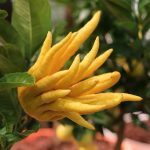
Lemon, Buddha's hand, Citrus medica - care of the lemon
The lemon 'Buddha's hand' is probably the most unusual form of citrus medica. It comes from Southeast Asia and is mainly used for the production of citron pate. Their scent is sweet. The flowering time is all year round. The approx. 10-20cm long fruits are reminiscent of hands and fingers: hence the name 'Buddha's hand'. In Buddhism it is used as an offering in temples.

Phalaenopsis, butterfly orchid - care & repotting
The Phalaenopsis is one of the front runners among the indoor plants and the most popular of all orchids. The shapely and blooming plants come in countless color variations. Even if orchids are often decried as little divas, the Phalaenopsis tolerates minor care errors, so that even beginners can try their hand at them. With appropriate care, they impress many weeks a year with their breathtaking blossoms.
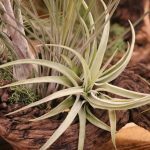
Tillandsia, Tillandsia - species & care instructions
With over 550 species, the plant genus Tillandsia is considered to be the most species-rich within the bromeliad family (Bromeliaceae). Due to their ease of care and their attractive leaves, Tillandsia have enjoyed increasing popularity as a houseplant for years. The shape and color of the plant, which is also often referred to as an air plant, amaze many. The following care instructions show how it grows and thrives optimally.
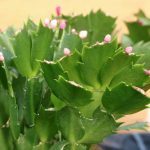
Christmas cactus, Schlumbergera - instructions for care
Plants from the rainforest are versatile and extraordinary, as the Christmas cactus impressively shows. Named after the well-known cactus grower Frédéric Schlumberger, the extraordinary plant presents itself with a multitude of bell-shaped, large flowers during the Christmas season. The cactus species is robust. Nevertheless, some conditions have to be met if you want to cultivate the exotic plant on your window sill at home.
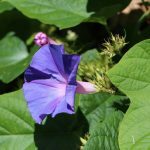
Morning glory, morning glory, Ipomoea species - care instructions
The morning glory displays its brilliant abundance of flowers throughout the summer. As busy climbing plants, tropical Ipomoea species offer us an abundance of creative scenarios that transform beds, facades and balconies into a heavenly flower paradise. Declared as frugal and undemanding, the funnel winch cannot do without horticultural attention. These care instructions explain in a practical way what the picturesque climbing artist really values.
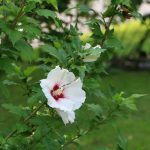
Hibiscus - care instructions as a garden and houseplant
As a houseplant, the hibiscus needs a little more care than in the garden. This is normal because the conditions in the bucket are different from those in the field. Nevertheless, it is worth taking a look at the care instructions, because the so-called Chinese Zimmerhibiskus feels very comfortable indoors and pampers its owners with beautiful Blossoms.
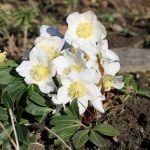
Christmas rose, snow rose, Helleborus niger - location & care
Snow rose, Christmas rose, hellebore - these terms mean a plant with an extraordinary flowering time. In the cold winter months, Helleborus niger brings color to the bare garden landscape. The evergreen plants are resilient and undemanding. Only a few points have to be met in terms of care and location so that the winter bloomers feel comfortable.

Buddleia, Buddleja - care, cutting and propagation
While the flowering time of many ornamental shrubs is coming to an end or is already over, this pretty and very vigorous flowering plant is covered with innumerable flower panicles. From July to autumn, the summer lilac, also known as butterfly lilac, brings its white, yellow, pink, violet or bluish flowers that attract a multitude of no less colorful butterflies into the garden, a blessing for the eye.

Anthurium, anthurium, flamingo flowers - care and reproduction
Everyone knows it, the bright red flamingo flower. With lush green leaves and the beautiful red bracts, it sets accents in the private home or in business premises. In our special care instructions for the flamingo flower, we explain how anthuriums are cared for, as these are originally called tropical plants.

Dahlias, Dahlia - planting, care and wintering
In the middle of summer, this year's dahlia bloom will start. Dahlias, the South American flowers, tirelessly enchant the garden and balcony with their abundant variety of flowers and colors until well into autumn. How good that the many thousands of varieties pull together, at least when it comes to cultivation. Read here how to plant, care for and overwinter Dahlia in an exemplary manner.

Cyclamen, indoor cyclamen, cyclamen - care
The cyclamen (Cyclamen persicum) has been decorating Europe's rooms since the 1960s, filling them with fresh color, especially on gray winter days. Numerous varieties offer an extensive range of colors. The cyclamen, the primrose plant, can be cultivated for up to 30 years with good care. Find out in professional care instructions how you too can enjoy your indoor cyclamen for a long time with the right care.

Amaryllis, knight star - overwintering and care after flowering
With its large, intensely colored flowers, the knight's star illuminates the dreary winter. As a potted plant and cut flower, the hippeastrum is particularly popular in the Advent and Christmas season. Since it needs different conditions in each of its growth phases, care is demanding. The instructions provide you with the knowledge you need to care for the amaryllis appropriately.

Pampas grass, Cortaderia selloana - care instructions + cutting
The American pampas grass is one of the ornamental grasses that is very decorative in the garden, in flower pots and as a dry plant. The choice of frond color and different growth heights allow a versatile design of gardens and balconies. The uncomplicated care makes the Cortaderia selloana a popular outdoor plant. Nevertheless, some care details must be observed so that the perennial ornamental grass thrives splendidly.
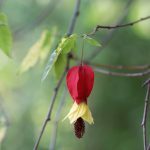
Beautiful mallow, abutilon, room maple - care and overwintering
Even if the mallow is also known as the indoor maple, the decorative plant loves to spend the summer outdoors as a container plant on the balcony or terrace. But in winter it has to be kept warm because it is not hardy. It forms its decorative flowers in a wide variety of colors, especially in the summer months.
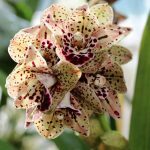
Cymbidium Orchid: Care from A-Z - Getting the Cymbidium to bloom
The Cymbidium Orchid owes its name to the shape of its decorative flowers. With their curved, boat-like lips, they are reminiscent of a boat, which means "kymbos" in Greek. The beauty is native to Thailand, Burma and northern India, as well as Australia and Indonesia. In the local latitudes, hybrids are offered in the trade, which are particularly suitable for indoor culture due to their crossings. With the right care, the Cymbidium will bloom in the most beautiful colors.
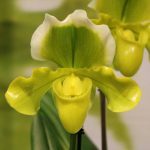
Lady's slipper orchid, Venus shoe, Paphiopedilum - care from A-Z
One of the most popular orchid species on the local window sills is the lady's slipper orchid, also known here as the Venusian shoe. Due to its origin in Thailand, the Philippines or Borneo and Sumatra, it is used to subtropical climates and is therefore very sensitive to cold. Cultivation in the bucket is therefore essential. The care of the lady's slipper orchid is a bit time-consuming, but if it is given the right one, it will thank you with many beautiful flowers and a long life.

Rush cactus, Rhipsalis baccifera - care, tips & tricks
The rush cactus, Rhipsalis baccifera, is an easy to care for and easy to keep cactus, but it is dependent on a suitable location. It is not hardy, but can be kept in the wild during the summer months. In terms of growth type, the rush cactus does not remind you of classic cacti, as it almost always grows overhanging and also has no spines. Nevertheless, it belongs to the cactus family.

Rod cactus, Rhipsalis pilocarpa - care, tips & tricks
Ripsalis pilocarpa is a cactus from the genus Rhipsalis. Its home is the Brazilian rainforests. The rod cactus is an easy-care plant that needs little water and a well-drained substrate. The cactus can be grown indoors all year round and develops white flowers in spring and red berries as fruits after flowering. In summer, Ripsalis pilocarpa is happy to be in the open air; it does not need special winter quarters.
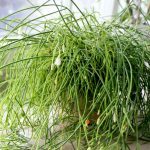
Coral cactus, Rhipsalis cassutha - care, tips & tricks
The coral cactus, botanically Rhipsalis cassutha, is an extremely easy-care plant that is also ideal for beginners. With its long shoots, it is particularly suitable as a hanging plant. The flowering time of the cactus is in November. Rhipsalis cassutha can be grown indoors all year round.
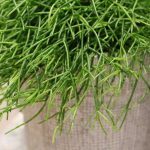
Coral cactus, rush cactus, Rhipsalis cereuscula - care, tips & tricks
The coral cactus, also called rush cactus, is an easy to care for houseplant. The name cactus is a bit misleading here, because even if it belongs to the genus of cacti, it does not have the typical appearance. It has many green shoots with round white fruits, which make an impressive picture. To the delight of many amateur gardeners, spines do not form on the decorative cactus. The plant, which comes mainly from Brazil, is also ideal for beginners due to its simple care.
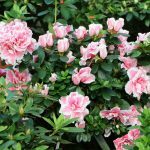
Indoor azalea - care & overwintering of azaleas as a houseplant
Indoor azaleas are often referred to as "bouquets in pots". This is due to their abundant flowering, which delights us in the gray and dreary winter months. Unfortunately, the plants are often disposed of after the flowering period. The room azalea becomes very old and, with proper care, will develop many flowers in the following year.

Vanda orchid - keeping, care in the jar and propagation
Deep blue flowers and a national size characterize the Vanda orchid, which, along with phalaenopsis and grape orchids, is one of the best-known indoor orchids in Germany. Despite its flowers and the intense, lovely aroma, it is not the easiest orchid and requires a lot of care and a suitable location. Its blaze of color makes it a popular flower that, when kept appropriately, likes to grow tall and sprout strongly.
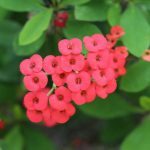
Christ thorn, Euphorbia milii - care and propagation by offshoots
The Christ thorn, botanically Euphorbia milii, is a pretty and decorative plant with red, white or yellow flowers. In addition, the plant is extremely robust and easy to care for and can also be cultivated by beginners without any problems. Unfortunately, the unsuspecting-looking plant is very poisonous and should only be touched with gloves: so be careful when caring for it!

Mushroom herb, Rungia klossii - profile and pictures
Mushroom herb is a perennial plant from the acanthus family. The plant originally comes from Papua New Guinea, where it can still be found at an altitude of 2000 meters. The mushroom herb is rich in valuable vitamins and is used as a herb because of its special mushroom aroma.
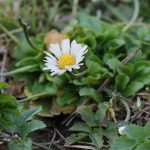
Daisies, Bellis perennis - facts and figures
The daisy is a perennial plant from the sunflower family. The plant comes from the Mediterranean region, so it prefers a sunny location. Daisies are popular wild herbs.
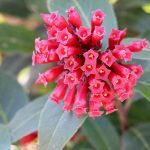
Hammer shrub, cestrum - varieties, care and wintering
The hammer bush, lat. Cestrum, belongs to the nightshade family and is therefore poisonous. As a tropical plant, it does not survive our winters outdoors. The best known is the Mexican hammer bush, which not only blooms for a very long time, but also tolerates the German climate better than its fellow species. Hobby gardener enchants Cestrum with its beautiful flowers in strong colors. The most common varieties are the Mexican and the red hammer shrub with their intense red flowers.
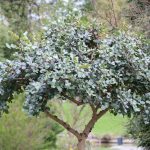
Carob tree, Ceratonia siliqua - profile and care instructions
With the carob tree, the floral magic of the Orient finds its way into your winter garden and on the summery balcony. The decorative flower and fruit trees convince with an impressive look and diverse forms of use. This profile will familiarize you with the unique properties of the fascinating Ceratonia siliqua. If you have been fascinated by the diamond tree, our tried and tested care instructions will give you all the relevant precautions for successful and productive cultivation.
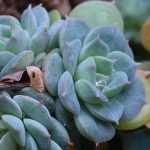
Echeveria habenbergii - profile, care and overwintering
Echeveria habenbergii is a frugal houseplant that does not take much time to care for. Therefore, the plant is also ideal for people without green fingers or experience. If the few necessary factors are taken into account in the cultivation of the plant, it will reward the effort with a decorative and exotic flower - and that in winter of all places.
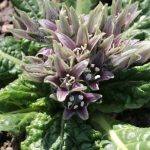
Mandrake, Alraunwurzel, Mandragora officinarum - plant information
The Mandragora officinarum grows with a basal rosette of leaves from a bulbous, usually two or three-fold split root. Since the leaves are up to 40 cm long, adult mandrake can reach diameters of up to 90 cm. The mandrake root is similar in appearance to the human body. This is why our ancestors believed that she had powerful magical powers. From a horticultural point of view, there is hardly any demand for the flowering plant, which is why it is one of the real rarities.
